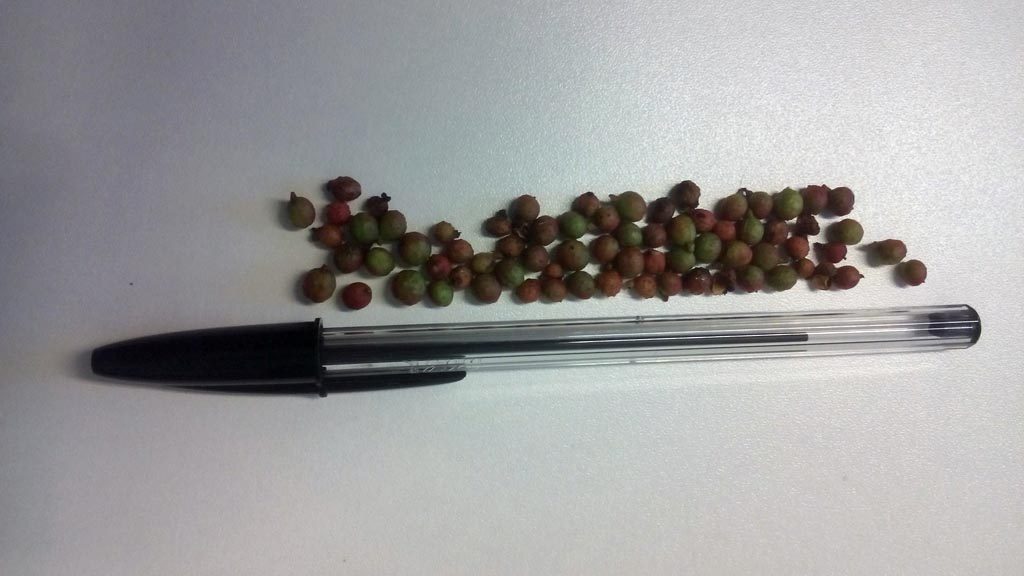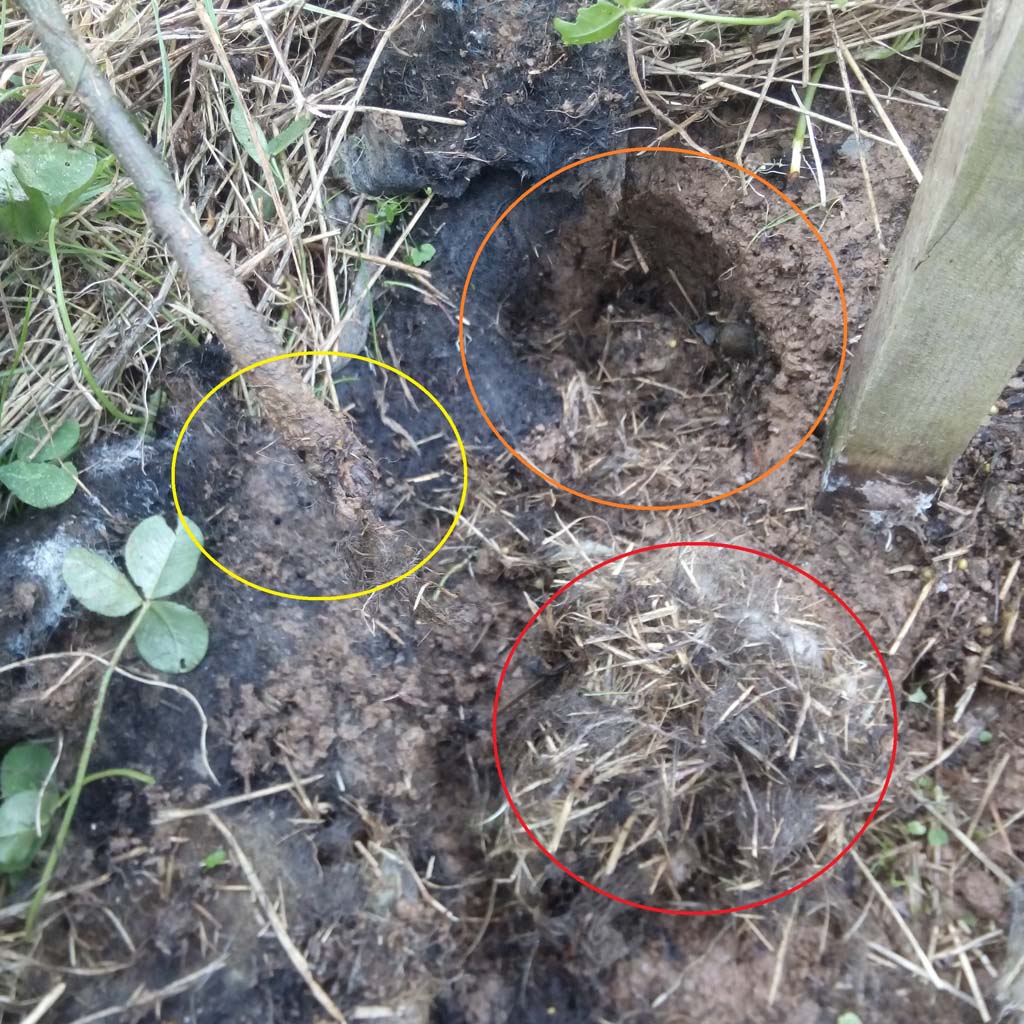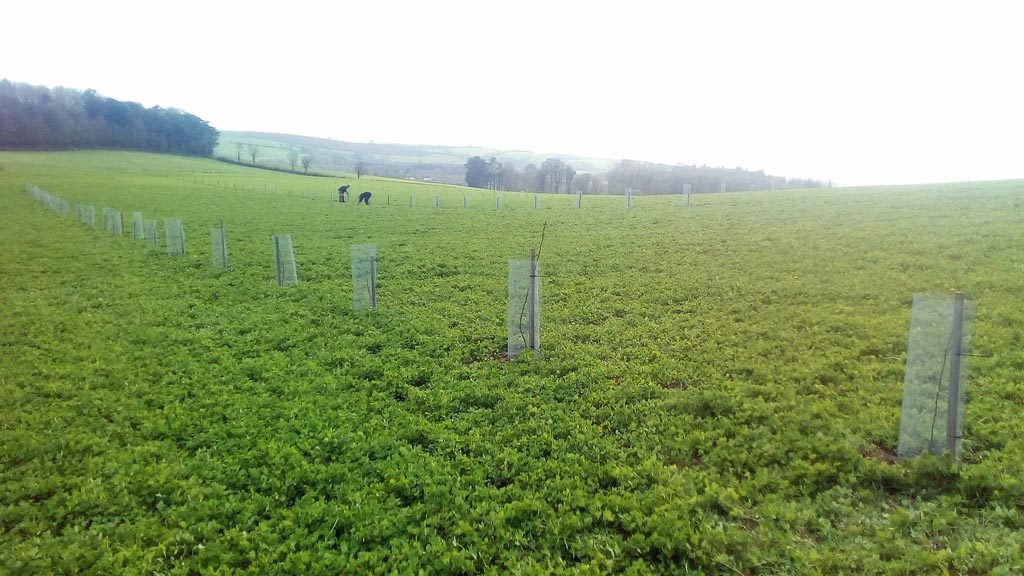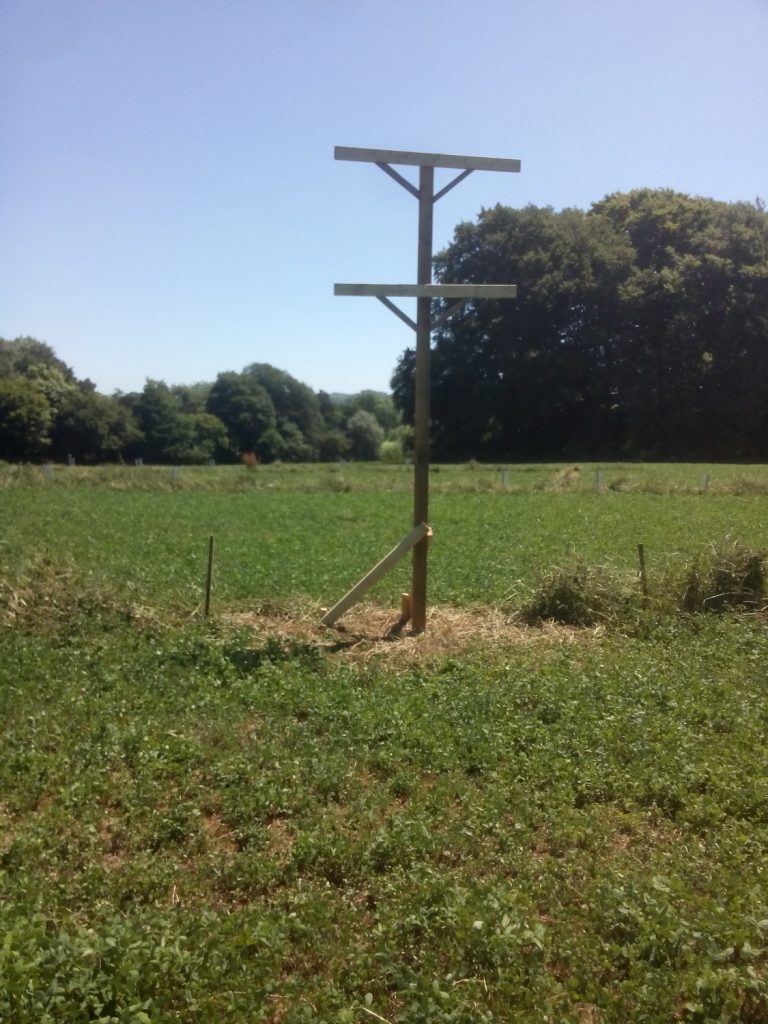About this time last year I jotted down an update of our initial learning in establishing our multi-crop, multi-tenant agroforestry scheme.
As our second growing year progresses it seemed like a good time for an update.
Ultimately I think the central learning this year is unsurprising: the crops which are being grown by the people with the most experience in managing them are doing best. It’s not a shock but if we extrapolate from this field to a bigger picture, there is greater demand than ever for farmers to plant more trees on their land. If this is to be achieved successfully then we need not just the will, but the skills and knowledge too.
Thankfully The Woodland Trust and Soil Association have put their heads together and come up with some clear policies government can adopt to support farmers. Have a read of ‘Agroforestry in England: Benefits, Barriers and Opportunities’ to find out more.
Otherwise, read on for a more detailed summary of progress to date – including a special section all about voles. And if you’re new to this project, or just want to know more about agroforestry, our introductory resource is a good place to start.
Harriet Bell (previously food & farming manager at Dartington Hall)
1. Crop-by-crop summaries
Apples: The apples seemed to have established well, with a loss of less than 10 out of 600. Surprisingly about 30% are also already cropping with an estimate yield of 200-400kg predicted for this autumn – a very unexpected event given the trees are only in their second year and are in a rather windswept place. Marina O’Connell of Huxhams Cross Farm puts this down to good establishment despite the wild weather events and relatively good soil to establish themselves in – and that they got their roots down through the sub soiled layer. They do need a little attention to re stake etc.
Elderflower: Luscombe have established new elderflower plantings on several previous occasions so they’ve had a few opportunities to trial different approaches. This is the best planting so far which is good news but likely reflects that this planting has been more actively managed than historic attempts.
They are still at least a year from cropping but hopefully the trees have established good root strength and they’re putting on some growth. Some of them do have a slight lean and that’s probably a reflection of us opting out of planting a wind buffer. This autumn they will be gapping up the failed slots.
Sichuan peppers: Oh, the peppers, the peppers. They have had me biting my nails, writing pleading emails to botanical gardens on the other side of the world, trying to devise mass slaughter methodologies for small furry animals and chanting “first year sleep, second year creep, third year leap” under my breath – but the reality is some of them aren’t asleep, they’re just dead.
Wrong trees in the wrong place or are we just not getting the methodology right? More detail – including on the aformentioned furry animals – further down the blog. On the plus, side the trees represent only a small portion of the total tree planting in the field because we knew they were potentially a higher risk crop and planned our planting accordingly.
2. Weather
Early droughts in 2017 combined with night frosts put all the trees under quite a lot of stress from about March onwards and we saw very little in the way of leaf emergence on the apples and peppers; the elderflowers had leaves but they were yellow. Rain in the summer months last year did help them bounce back – the elderflower seemed most resilient (could be due to its location in the field?), and in September we actually had elderflower, apples and peppers all in flower.
However, it was then in September and October that we started to be hit by storms, such as storm Emma, which knocked off any peppers which had formed and left the pepper trees with wind scorch.

First year’s sichuan pepper harvest
It was at least comforting to hear from several sources at the 2018 January farming conferences that we are certainly not alone in finding last year problematic. The challenge of climate change I guess is establishing new crops in less predictable weather patterns, currently as I write the UK is basking in a seriously impressive heat wave but all I can think of is how it will impact this year’s trees.
In the short term and in relation to the peppers it was decided not to start goblet pruning the trees this year as intended but to let them grow out more so they act as a wind break for each other. New trees going in have also gone into the more protected field margins, again, to give them a head start so that they can then offer protection for future plantings. Other actions we’ve been debating include:
- Under planting the wider spaced trees (apples and peppers) with something to increase each rows capacity to act as a wind break for other rows.
- Sacrificing the first row of peppers (not currently planted) as a wind break and putting in something purely for that purpose as Martin Crawford originally recommended. This is quite sensitive due to the field’s proximity to the garden.
- This year’s pepper trees are all one-year-olds, versus last year’s two-year-olds. This may help their resilience as they’re shorter so hopefully they can get a good root establishment before their tops become too exposed.
3. Weeds
In terms of understorey management Luscombe have kept a patch below their trees free from grass and weeds.
Huxhams Cross Farm’s apple trees were mulched with mypex, 1m square, but the grass in the rest of the tree strip was left uncut until the autumn.
Not being particularly fond of mypex, and its tendency to leave straggly strands of plastic woven in among the undergrowth, I opted for biodegradeable mulch mats for the pepper trees, about ½ m squared.
Luscombe’s system seems to have worked well for the elderflowers and the apples similarly seem to have done fine with the mypex.
However, not to offend all biodegradable mulch matt manufactures and distributors but they barely survived one growing season and were probably too small at only 1/2 metre squared. We have also wandered if the difference in success rate between the apples and the peppers may reflect that the mypex is not just more effective at controlling the weeds but also better at keeping in moisture. Lastly we’re also a little suspicious that the biodegradable mats may have exacerbated a pest problem (expanded on below). I’m still open to being won back to them, because it may be my management rather than the mats themselves, but I’m definitely not buying them again in the foreseeable future.
On the basis that this project brings together a variety of expertise for pepper trees being planted this year we have opted to go the mypex route, which seems to be doing better.
4. Minerals and nutrients
When we laid out the field we were aware that at 48 acres there was an array of different soil types and soil quality which may have some bearing on the success of different trees. The differences are even visible in the silage where clear patches of weaker growth can be seen or are noticeable as you walk through it.

Before we planted we commissioned a soil survey of the field. Between the different samples pH varied between 5.5 and 7.3, organic matter went from 4.3% w/w to 7.2 % w/w and nitrogen was between 0.19% w/w and 0.33% w/w which basically means that we knew that even between individual trees in the same row, some would be better off than others.
Download the soil survey (pdf, 1.5MB) ⇓
If this diversity in soil is affecting the elderflowers and apples then it would seem that it only manifests itself in the differing sizes of some plants.
With the peppers, when leaves finally did emerge post drought and frosts, some had a very clear leaf discolouration. We asked Martin – who has grown peppers for many years at the Agroforestry Research Trust – to come and take a look but it was not something he had ever seen before (which was both comforting and not). He thought it likely it was a mineral deficiency but was not confident about which mineral. So all we’ve really done to address the issue is add some lime to the hole when planting new pepper trees which will hopefully aid the uptake of all minerals.
5. Pests
From past experience Luscombe know that slugs pose the biggest threat to establishing new elderflower trees. This is why they don’t use mulch mats, as they create slug habitat, preferring instead to keep the base of all trees free from vegetation and apply slug pellets during establishment. The trees were also guarded with the standard plastic spirals to prevent consumption by small mammals.
The apples similarly just had standard plastic tree guards to protect the base of the stem from small mammals.
The peppers started out unguarded on the basis that they have both a strong flavour and sharp thorns and at 2 years old (the age of the first trees planted) their bark should be able to withstand the slugs.
Both the apples and the peppers took some deer damage in their first year – and some sheep damage, when a member of the public decided they’re rather cut through the field fence than face the inconvenience of actually having to continue walking to the nearest gate, in the process letting a field full of sheep into a field full of young trees.
In an attempt to protect them from what we thought was largely deer damage we retrospectively started guarding all the pepper trees with the standard plastic tubes. However, when Martin Crawford came to inspect our leaf discolouration issue (mentioned previously) he thought that actually we were getting mostly slug damage and in guarding the trees with plastic guards we’d just enabled easier access for the slugs so we promptly unguarded them.
6. A special section on voles
The real pest, in relation to the peppers, was not discovered until the autumn. The peppers are owned and managed by the Dartington Hall Trust itself but as we are not active farmers and our gardens and estate teams are pretty maxed out in terms of their workload we’d contracted Marina O’Connell of Huxhams Cross Farm to manage the pepper trees for us.
When Marina came to the field in the autumn of 2017 to do some maintenance on the existing trees and plant some further ones she found that around one in three of the pepper trees had a vole hole or nest where its root ball should have been.
This was not an anticipated problem. In fact, in her some years of growing Marina has only heard of this level of problem from a friend who farms in Slovakia – where apparently they plant new trees in little balls of wire mesh specifically to protect their roots from voles.

Image showing vole damage. Yellow = cut straight across at the base, somewhat missing roots; orange = where the tree was planted and the root ball should have been; red = where we touched the tree, realised it had no roots, and found only vole nest material instead.
The voles don’t appear to have gone for the elderflower at all and whilst there is some evidence of them amongst the apples it is the peppers they’ve really hit. So our first question was what is it about the pepper trees that’s attracting them so much? We don’t have a definitive answer but some thoughts were:
- Were the biodegradable mulch mats used on the pepper trees really good nesting material?
- The pepper trees were the only trees planted with a handful of edible mycelium mix in the base, which appeared to fruit quickly. Were the mushrooms attracting the voles as a ready food source? We made contact with the team at Chaos Fungorum, who produce the mix we used to ask if this is something they’d experienced before. Apparently, voles being attracted to mushrooms is not something they’d ever come across before.
- One of Marina’s other thoughts was that the peppers were the only trees which came to be planted potted in compost, with lots of small roots; all the other trees were planted bare root and therefore there were not so many little roots to munch on.
- When we planted the trees we were very pleased with how we’d managed to mark out clear planting rows using the GPS system on the tractor to subsoil clear lines into the field. However, what we may have unwittingly done is create vole superhighways across the field – whereby they can travel great distances going tree to tree within the subsoiled line without having to expose themselves to predators above ground. Our suspicions that this may be the most significant issue were confirmed when we attended the recent Farm Woodland Forum meeting where we met Stuart Holm, and Outreach Manager for the Woodland Trust, who has advised the Allerton project on their agroforestry planting. In Stuart’s experience using a tractor and GPS does work well for marking out agroforestry plantings but it is crucial not to go to deep but just to ‘tickle the surface’. Otherwise he’s found previously you create great slug habitat and then it’s the slugs that attract the voles. Why would this only be affecting the peppers given we marked out the whole field this way? Well, not sure – but possibly because they’re in some of the worst ground. In the wetter ground, or ground with higher organic matter, where the elderflowers are, the rows have closed together more.
- Maybe they’re the wrong tree in the wrong place and that’s weakening them and making them an easier target.
- Voles apparently do just go through population boom and busts, so we may just be experiencing the impact of a boom year.
Now – I tend towards the organic persuasion when it comes to farming practices, but if at the time of discovering the extent of the damage someone had offered me a spray or pellet to bring about mass vole population collapse I would have taken them up on it without hesitating. However, driving home that night I passed the field and there was a tawny owl perched on the gate post. I have never seen an owl on the estate before, nor been so close to a wild one, and immediately I felt very guilty for wanting to fill their food supply with poison.
So, how to tackle the voles whilst leaving the owls a healthy lunch? Well, I thought nature might do it for me: I will confess to sitting smugly and warmly indoors during the ‘Beast from the East’ imagining them all freezing to death in their burrows – but they didn’t.
Internet research suggests that voles aren’t that easy to manage but wire mesh might do the trick as it is open – so not exacerbating the slug situation – but can be fine enough to prevent voles (and other small furry mammals) getting to the trees, although ideally it would be dug in. I might have gone a bit over board on the wire mesh; in terms of the budget I might have gone a long way overboard – but hopefully the trees will only need them whilst young and we can then re-use the mesh on future plantings.

Wire mesh around trees in agroforestry field
The other suggestion, which came from the Forestry Commission team, was raptor posts. Raptors are basically birds of prey – and raptor posts are just a way of encouraging them to hunt in specific areas by providing them with a place to perch as they scan for prey. So we’d encourage my tawny owl on the gate post to perch where the pepper trees are- and feed from the vole population around the peppers.
How to make a raptor post wasn’t something we knew much about, but we suspected height would matter and also that the perch wasn’t too narrow, as that can put pressure on their feet which is uncomfortable. Fortunately our more experienced neighbours here in Devon, The Barn Owl Trust, were able to offer some guidance – and Dartington’s conservation volunteers have now put up three raptor posts or, as they like to call it, the ‘triangle of doom’ around the pepper trees.

Lastly, predators are only likely to successfully catch the voles if they can see them – so as we go forward we need to at least keep the grass down a bit more and I am inclined to move away from mulch mats towards a more of a bare earth policy around the trees to make them a less appealing nesting site. The most cost effective way of achieving this would be to spray off the grass around the trees with a selective herbicide. Environmentally I’m not sure what the ethical position is on spraying an area for a limited time in order to plant trees successfully?
An option with more upfront cost, and one suggested by someone from the Woodland Trust with experience in the Christmas tree trade, is dusting off the sickle and spending a few hours on grass duty. I have actually given this a try and you can make a reasonable dent in a few hours. The plus side to this method is that in cutting and leaving the silage mixture of clover and rye grass found under the trees, I’d be leaving a nice, nitrogen-rich mulch behind which should do both tree and soil some good in the long term (which cannot be said of the spraying off option).
Whichever route we take we just need to up our management game with the peppers I think – emulating and learning from the more successful plantings.

Dear Harriet Bell,
I am a teacher at the South Devon Steiner School.
I have already written to your colleague Mike Newby to ask a huge favour:
I will be teaching LOCAL GEOGRAPHY to the pupils of my class. We will go on a field trip to Dartington Hall Grounds on Tuesday, 26th of November.
It would be wonderful for the children to hear you talk about your work with the land of the estate. I would like to let them gain an experience of how the efforts and endeavours of different people have shaped the landscape of their home environment. Is there any chance to meet you and hear you describe your work?
I realize that I am asking a lot, but look forward to your reply,
Thank you for your time,
sincerely
Ive had serious issues with voles whilst growing my nursery stock under mypex. The best thing I did was to remove the mypex, grow through a woodchip mulch and make sure the grass nearby is kept short all the time. This hasn’t eradicated them completely but has certainly reduced the extent of the damage.
Harriet- I grew large gardens in an area of Northern California where everything- trees, plants, garden beds- were lined with metal mesh due to an out of control gopher problem. Or maybe we were out of control, and the gophers were just doing their thing:) New garden beds were lined with hardware cloth- not sure what you call it there- making sure that it was well stapled to the wooden beds. Older beds with rusty metal mesh would get holes which the gophers readily found, and they needed to be redone sometimes. The larger farmers plant straight into the ground, and just grow enough to share with the gophers. I have watched a large plant disappear before my eyes into the ground as a gopher munched it. Good luck- wire isn’t fun to work with, but it’s the only way we have found to deal with the gopher and vole problem.
Hi Shanna,
Thanks for your comment – interesting to get an international perspective and thankful gophers have never made it over here. We have enough trouble with the introduced grey squirrels!